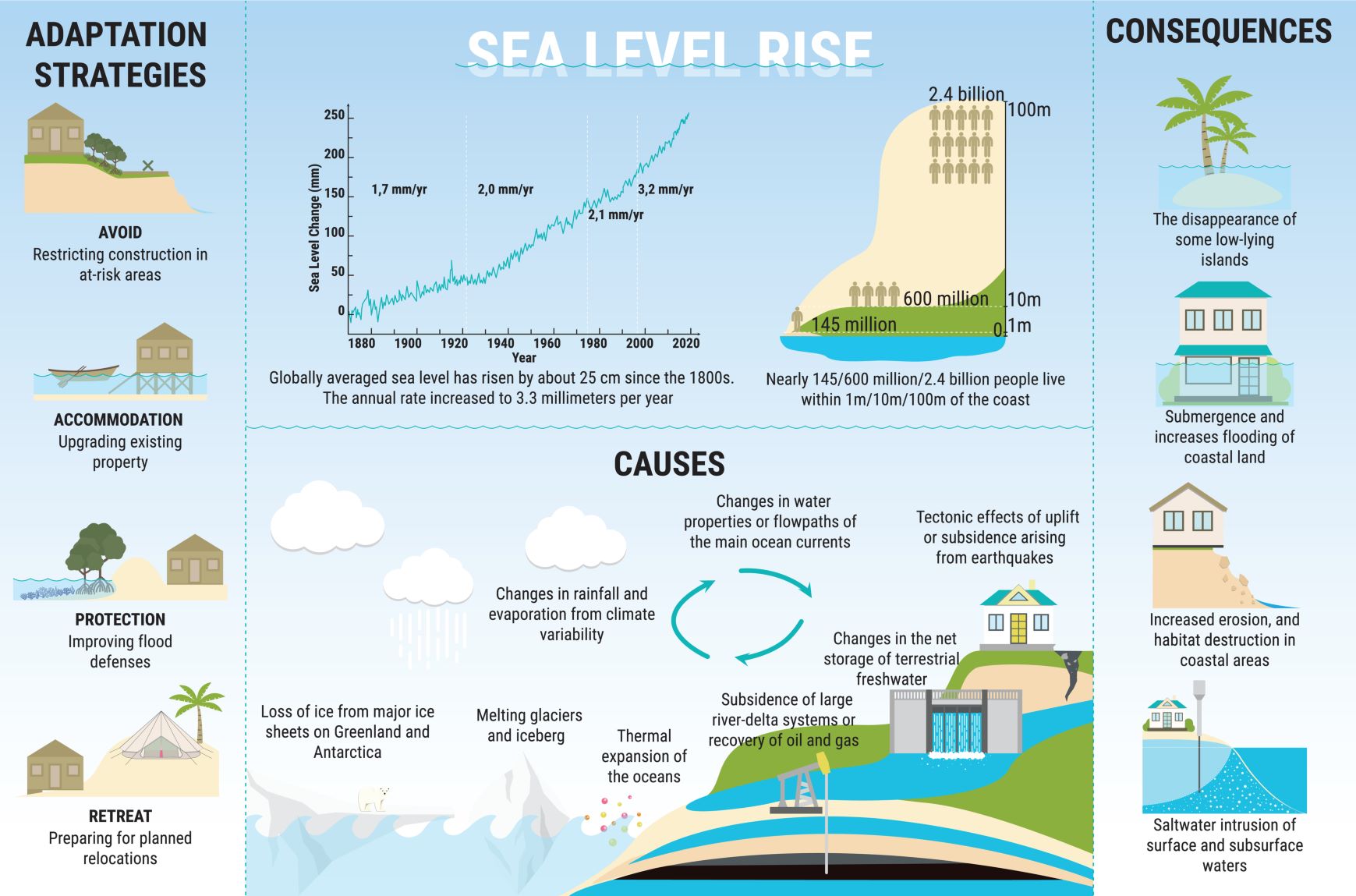With one in ten people now living in low-lying coastal areas, cities test new ways of tackling rising seas
One in 10 humans now lives in a coastal city at risk of flooding. As urbanization continues to increase, the case for adaptation is growing more urgent – and cities around the world are taking a variety of approaches.
H
uman societies have built their cities by the sea for thousands of years for a very good reason. If trade is the lifeblood of the world economy, then seagoing trade routes are its circulatory system – and so it is darkly ironic that climate change, driven in part by the economic activity that maritime trade has facilitated, now threatens those very cities whose prosperity has been built on their proximity to the sea.
The latest analysis suggests more of us are at risk from inundation than was previously thought. For example, a study published last year by the Coalition for Urban Transitions found that one in 10 of us – around 710 million people – now lives less than 10 metres above sea level. More than three-quarters of them live in Asia, while more than half the urban population in low-lying countries such as Thailand and the Netherlands today lives in this precarious zone.

Making waves
Floods have always posed a threat to coastal settlements. Today, that risk is growing fast. Climate change means an increasing volume of storm surges and the certainty of rising sea levels. The Coalition for Urban Transitions’ report is focused largely on the economic opportunities that a zero-carbon future can offer the world’s cities – but that will not be enough. To survive and thrive, cities with a sea view will need to take a long-term view on building in resilience to flooding.
Many are already doing so, using a variety of approaches with one theme in common: working with, not against, the rising tides. The Chinese government, for example, has pumped (no pun intended) an estimated $12 billion into its ‘sponge city’ initiative, which uses green infrastructure to vastly improve cities’ drainage. These include the creation of new wetlands that can absorb – and filter – floodwater, as well as permeable pavements and green roofs. The project was launched in 2015, with a target that 80% of the urban land areas involved will absorb and reuse a minimum of 70% of their rain and floodwater this year. We should find out soon whether the initiative has hit its targets – but it has also brought some of the challenges involved into relief, such as the difficulty cash-strapped cities can experience in financing what can be costly schemes.
Elsewhere in Asia, Hong Kong and Singapore – both low-lying, flood-prone cities – have been carrying out their own flood resilience works. Among Hong Kong’s efforts is the Anderson Road Quarry development, where the city is digging its first flood-retention reservoir. As with China’s sponge cities, this project will also boost Hong Kong’s acreage of green public space.

Singapore is investing up to $100 billion over the next 50-100 years in new coastal defences, including the construction of polders – areas of land reclaimed from the sea and surrounded by dykes. In the US, meanwhile, New York City – where Hurricane Sandy caused $19 billion of damage in 2012 – is planning a combination of these approaches, including a flood wall and new green spaces around the edges of the city.
Cash flow
Many of the cities that will be worst-affected by flooding are not in the US or the wealthier parts of Asia, however; they are in less well-resourced countries, such as India and Bangladesh. Three cities in these two countries – Mumbai, Dhaka and Kolkata – between them host 11-14 million people who are at risk of being flooded. And as growing numbers of people continue to move into urban areas, the number at risk will grow, too.
But it’s not just cities themselves that are at threat. They are, after all, countries’ engines of economic growth – and it is estimated that flooding could cost the world’s coastal cities $1 trillion in damages by the middle of this century. The waters are rising; the time to stop them from further diluting the world’s economic lifeblood is now.
The ideas presented in this article aim to inspire adaptation action – they are the views of the author and do not necessarily reflect those of the Global Center on Adaptation.